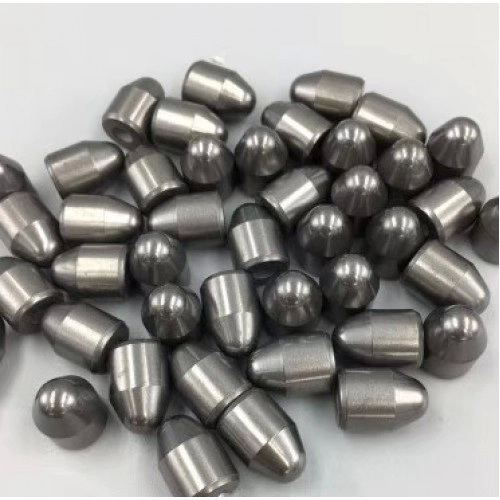Content Menu
● Introduction to Silicon Carbide
● Global Production Capacity Overview
>> Current Production Scale
>> Leading Producers and Regional Distribution
● Silicon Carbide Manufacturing Processes
>> Traditional Production Methods
>> Advanced Manufacturing Technologies
● Applications Driving Silicon Carbide Demand
>> Semiconductor Industry
>> Industrial and Metallurgical Uses
>> Oil and Gas Drilling
>> Mining Equipment
>> Defense and Aerospace
● Environmental Impact and Sustainability Efforts
● Emerging Applications in New Technology Sectors
● Market Challenges and Competitive Landscape
● Future Research Directions and Innovations
● Conclusion
● FAQ
>> 1. What are the main methods used to manufacture silicon carbide?
>> 2. Which countries dominate silicon carbide production?
>> 3. What industries benefit most from silicon carbide?
>> 4. What are the challenges in silicon carbide manufacturing?
>> 5. How is silicon carbide impacting electric vehicle technology?
Silicon carbide (SiC) is a high-performance material that has become indispensable in various high-tech and industrial applications. From semiconductors and power electronics to mining tools and military equipment, silicon carbide's unique properties—such as exceptional hardness, thermal conductivity, and chemical stability—make it a cornerstone of modern manufacturing and technology. This article explores the global production capacity of silicon carbide, the manufacturing processes involved, its diverse applications, emerging trends, and sustainability efforts shaping its market landscape.

Introduction to Silicon Carbide
Silicon carbide is a compound of silicon and carbon known for its extreme hardness, high thermal conductivity, and chemical inertness. It is synthetically produced and used in a wide range of industries including electronics, metallurgy, oil and gas drilling, mining, construction, and defense.
The production of silicon carbide involves sophisticated processes to ensure high purity and crystal quality, especially for semiconductor applications. The global demand for silicon carbide is growing rapidly, driven by the rise of electric vehicles, renewable energy technologies, and advanced industrial applications.
Global Production Capacity Overview
Current Production Scale
As of 2023, the total announced global production capacity for silicon carbide wafers—used primarily in semiconductor and power device manufacturing—was approximately 2.8 million 150-mm wafer equivalents. This capacity is distributed among established and emerging companies across different regions:
- Mainland China accounts for about 1.5 million wafer equivalents, split between established companies (0.7 million) and emerging companies (0.8 million).
- The rest of the world holds around 1.3 million wafer equivalents, with 1.2 million from established companies and 0.1 million from emerging firms.
By 2027, the global production capacity is projected to increase dramatically by about 8 million wafer equivalents, reaching a total of roughly 10.9 million 150-mm wafer equivalents. Mainland China is expected to contribute significantly to this growth with 5.4 million wafer equivalents (2.5 million from established and 2.9 million from emerging companies), while the rest of the world will add 5.5 million wafer equivalents (4.8 million from established and 0.7 million from emerging companies).
Leading Producers and Regional Distribution
The global silicon carbide market is dominated by key players such as Wolfspeed, Coherent, Rohm's SiCrystal, SK Siltron, STMicroelectronics, Onsemi, Infineon, and several Chinese manufacturers including SICC, TankeBlue, and San'an. China has rapidly expanded its production capacity and is projected to account for nearly half of the global silicon carbide wafer supply by 2024, marking a significant shift in the market dynamics.
Europe and the United States remain home to established manufacturers focusing on high-quality production and innovation, while China's aggressive expansion is driving volume growth and cost reductions.
Silicon Carbide Manufacturing Processes
Traditional Production Methods
The most common method for producing silicon carbide powder is the Acheson process, developed in the late 19th century. It involves heating a mixture of silica sand and carbon in an electric resistance furnace at temperatures between 1600°C and 2500°C, resulting in silicon carbide crystals of varying purity.
For high-purity single crystals used in semiconductor wafers, the Lely method or its modern variants are employed. This process sublimates silicon carbide powder at high temperatures and redeposits it onto seed crystals, producing large, high-quality single crystals.
Advanced Manufacturing Technologies
Chemical vapor deposition (CVD) is widely used to grow epitaxial silicon carbide layers for semiconductor devices. This method allows precise control over crystal growth and doping, essential for high-performance power electronics.
Recent advancements include:
- Improved temperature control systems with accuracy to 1°C.
- Multi-segment temperature gradient control for uniform crystal growth.
- Intelligent automation and AI-assisted production, increasing efficiency and reducing defects.
- Physical vapor transport (PVT) and continuous feed sublimation methods for scalable production.
These innovations have lowered manufacturing costs by approximately 40% over the past five years while doubling product quality.
Applications Driving Silicon Carbide Demand
Semiconductor Industry
Silicon carbide is revolutionizing power electronics due to its ability to operate at higher voltages, temperatures (up to 200°C junction temperature), and frequencies than traditional silicon devices. SiC MOSFETs and Schottky diodes offer:
- Reduced conduction losses by up to 50%.
- Increased switching speeds by 10 times.
- Smaller, lighter power modules with improved thermal management.
These advantages are critical in electric vehicles (EVs), solar inverters, industrial motor drives, and energy storage systems.
Industrial and Metallurgical Uses
SiC is widely used in abrasives, cutting tools, and refractory materials due to its hardness and thermal resistance. In metallurgy, silicon carbide serves as a source of silicon and carbon for steelmaking, improving cast iron quality and reducing emissions.
Oil and Gas Drilling
Silicon carbide components such as drill bits, downhole tools, and casing liners are essential for deep-well drilling in harsh environments. SiC's durability and high-temperature resistance enhance drilling efficiency and safety.
Mining Equipment
SiC parts improve cutting tool longevity and performance in abrasive mining conditions. Advanced manufacturing techniques enable customized shapes and coatings, reducing maintenance and environmental impact.
Defense and Aerospace
SiC electronics withstand extreme temperatures and power demands in military vehicles, radar systems, and aerospace applications. The US Department of Defense leverages SiC for enhanced power density and reliability, aligned with semiconductor innovation initiatives.

Environmental Impact and Sustainability Efforts
The production of silicon carbide, while technologically advanced, also faces environmental challenges. The Acheson process, which is energy-intensive, contributes to significant carbon emissions. However, manufacturers are increasingly adopting greener technologies and renewable energy sources to reduce the carbon footprint of silicon carbide production. Recycling of silicon carbide materials and waste minimization strategies are also gaining traction in the industry.
Sustainability initiatives include the development of low-energy synthesis methods and the use of alternative raw materials that are more abundant and less environmentally damaging. These efforts not only help in meeting regulatory requirements but also appeal to environmentally conscious customers and investors.
Emerging Applications in New Technology Sectors
Beyond traditional uses, silicon carbide is finding new applications in cutting-edge technologies. For instance, SiC is being explored for use in quantum computing components due to its excellent thermal and electrical properties. Additionally, the material is gaining interest in the development of high-frequency 5G communication devices, where its ability to handle high power and heat is critical.
In the renewable energy sector, silicon carbide is pivotal in improving the efficiency of wind turbine converters and energy storage systems. Its robustness and efficiency contribute to longer system lifespans and reduced maintenance costs.
Market Challenges and Competitive Landscape
The silicon carbide market is highly competitive, with rapid technological advancements and new entrants constantly reshaping the landscape. Intellectual property rights and patents play a significant role in maintaining competitive advantages. Companies invest heavily in research and development to innovate and reduce production costs.
Supply chain disruptions, especially in raw material availability, pose risks to consistent production. Geopolitical factors and trade policies also influence market dynamics, particularly with the growing prominence of Chinese manufacturers.
Future Research Directions and Innovations
Research in silicon carbide is focused on enhancing crystal growth techniques to produce larger and defect-free wafers, which are essential for high-performance electronic devices. Innovations in doping methods aim to improve the electrical characteristics and reliability of SiC components.
Nanostructured silicon carbide materials are being developed for advanced applications in sensors and biomedical devices. Furthermore, hybrid materials combining silicon carbide with other compounds are under investigation to tailor properties for specific industrial needs.
Conclusion
The global production capacity of silicon carbide is rapidly expanding, with an expected near fourfold increase by 2027. Mainland China is emerging as a major hub, contributing nearly half of the world's supply. Silicon carbide's unique properties make it indispensable in semiconductors, industrial applications, energy production, defense, and mining. Advances in manufacturing technology are enhancing production efficiency and quality, while ongoing challenges such as cost and brittleness remain areas of focus. As demand for high-performance materials grows, silicon carbide will continue to play a pivotal role in shaping the future of technology and industry.

FAQ
1. What are the main methods used to manufacture silicon carbide?
Silicon carbide is primarily produced by the Acheson process for powder and by the Lely method or chemical vapor deposition (CVD) for high-purity single crystals used in semiconductors. Advanced techniques include physical vapor transport (PVT) and automation-assisted crystal growth.
2. Which countries dominate silicon carbide production?
China, the United States, and European countries lead silicon carbide production. China is rapidly expanding and expected to supply nearly half of the global market by 2024, while established companies in the US and Europe focus on high-quality production.
3. What industries benefit most from silicon carbide?
Key industries include semiconductor manufacturing (especially power electronics), automotive (electric vehicles), energy (solar inverters, drilling), mining (cutting tools), defense (military electronics), and metallurgy (steelmaking).
4. What are the challenges in silicon carbide manufacturing?
Challenges include the material's brittleness, high production costs, difficulty in machining and joining, and the need for ultra-pure raw materials to ensure consistent quality.
5. How is silicon carbide impacting electric vehicle technology?
SiC power devices enable higher efficiency, faster switching, and better thermal management in EV powertrains and charging systems, leading to longer driving ranges, shorter charging times, and reduced system size and weight.















